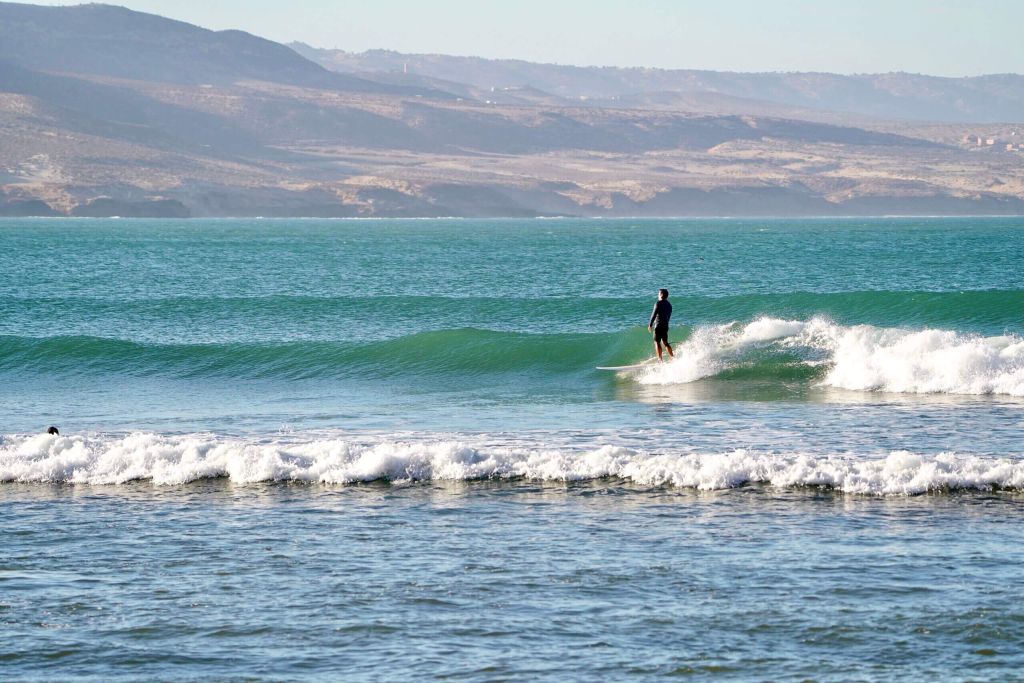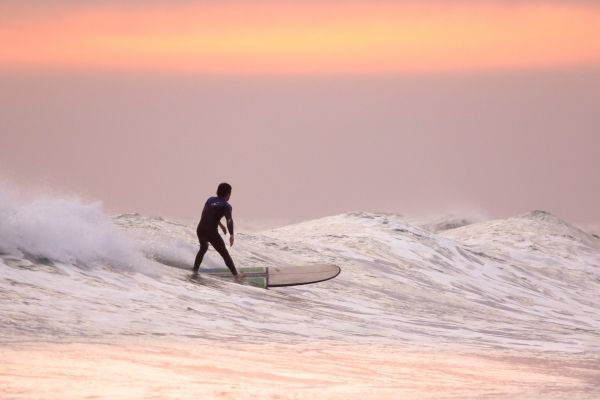Beach Breaks vs. Point Breaks vs. Reef Breaks
What’s the Difference?
Beach Breaks vs. Point Breaks vs. Reef Breaks: What’s the Difference?
If you're new to surfing, you’ve probably heard terms like beach break, point break, and reef break thrown around. But what do they actually mean, and how do they affect your surfing experience?
Understanding the differences between these types of waves can help you choose the right spot for your skill level and style. Let’s break it down.
1. Beach Breaks: The Ever-Changing Wave
What is a beach break?
A beach break occurs when waves break over a sandy ocean floor. Since sand shifts with tides and currents, beach breaks are constantly changing—meaning no two sessions are exactly the same.
Pros:
✔️ Generally safer for beginners (softer falls)
✔️ Waves can be more forgiving
✔️ Often has multiple peaks, reducing crowds
Cons:
✖ Unpredictable conditions (sandbars move)
✖ Can close out (break all at once)
✖ Strong currents and rips are common
Famous Beach Breaks:
Hossegor, France (powerful barrels)
Bondi Beach, Australia (consistent and beginner-friendly)
Trestles, California (high-performance waves)
Best for:
Beginners and surfers who like variety.
2. Point Breaks: The Long Rides of Your Dreams
What is a point break?
Point breaks form when waves wrap around a headland or rocky point, creating long, peeling waves that break in one direction. These waves are often more predictable because they’re shaped by the underwater geography.
Pros:
✔️ Long, rideable waves (perfect for carving)
✔️ More consistent than beach breaks
✔️ Often less steep, great for progression
Cons:
✖ Can get crowded (everyone wants that long ride!)
✖ Limited take-off zones
✖ Rocks or obstacles may be present
Famous Point Breaks:
Jeffreys Bay, South Africa (one of the world’s longest right-handers)
Malibu, California (classic longboard wave)
Raglan, New Zealand (epic left-hand point)
Best for:
Intermediate to advanced surfers who love long, smooth rides.
3. Reef Breaks: The Heavy (and Sometimes Dangerous) Waves
What is a reef break?
Reef breaks happen when waves break over a coral or rocky reef. These waves are often more hollow and powerful, creating barreling conditions. However, they also come with higher risks.
Pros:
✔️ Hollow, barreling waves (great for advanced surfers)
✔️ Consistent shape and break
✔️ Less affected by wind
Cons:
✖ Dangerous if you fall (sharp coral/rocks)
✖ Not ideal for beginners
✖ Tide-dependent (some only work at high/low tide)
Famous Reef Breaks:
Pipeline, Hawaii (the ultimate barrel)
Teahupo’o, Tahiti (heavy and shallow)
Uluwatu, Bali (long, powerful waves)
Best for:
Experienced surfers who can handle steep drops and shallow conditions.
Which One Should You Surf?
Beginners: Stick to beach breaks or mellow point breaks.
Intermediate: Try point breaks for longer rides.
Advanced: Test yourself at reef breaks for barrels and heavy waves.
No matter what type of wave you prefer, each break offers something unique. The key is to understand the conditions, respect the ocean, and—most importantly—have fun out there!
What’s your favorite type of wave? Let me know in the comments




